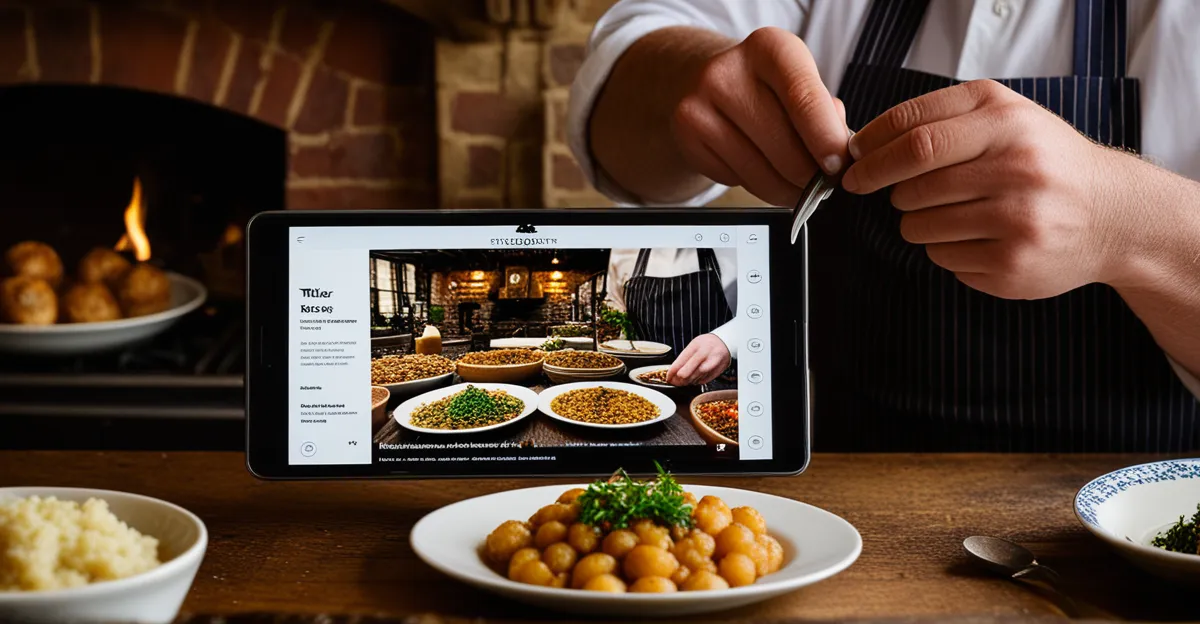Core Ingredients of Traditional UK Cuisine
Traditional British ingredients form the backbone of UK cooking staples, shaping the character of countless dishes. At the heart of these foundational foods in UK cuisine are robust, hearty meats such as beef, lamb, pork, and poultry, prized for their versatility and rich flavours. These proteins often pair with an array of UK root vegetables, including potatoes, carrots, parsnips, and swede, which provide earthy sweetness and substance.
British dairy products hold a special place as well; butter, cream, and cheeses like Cheddar contribute depth and creaminess, vital in both cooking and baking. Grains like wheat, oats, and barley underpin traditional baking ingredients in the UK, featuring prominently in breads, puddings, and pastries.
Also to see : What are the techniques for crafting a perfect trifle?
Herbs and seasonings also define the traditional palate. Parsley, thyme, and bay leaf are staples, often combined with salt, pepper, mustard, and malt vinegar to enhance flavour. Preserved foods such as pickled vegetables and chutneys add tang and complexity, connecting modern dishes to centuries-old preservation methods.
Together, these ingredients highlight the diversity yet grounded simplicity of traditional British cuisine, reflecting the country’s agricultural heritage and culinary preferences with authenticity and heart.
In parallel : How can you prepare a deliciously tender shepherd’s pie?
Essential Meats and Fish in The British Kitchen
Popular British meats such as beef, lamb, pork, and poultry form the cornerstone of many UK dishes. Beef is frequently used in classics like steak and kidney pie, while lamb drives hearty meals such as roast lamb with mint sauce. Pork, known for its rich flavour, features prominently in breakfast staples and sausages. Poultry, especially chicken, provides versatility across countless recipes.
When it comes to fish in UK cooking, cod and haddock are dominant, cherished for their mild taste and flaky texture. These fish are vital in the iconic dish, fish and chips, which continues to be a national favourite. Salmon is another key protein, prized for its rich, oily flesh, appearing in both smoked and fresh forms in British cuisine.
Signature dishes showcase these key proteins UK cuisine relies on. For example, beef appears in the classic Sunday roast, while haddock stars in Cullen skink, a Scottish smoked fish soup. The coastal geography supports an abundant variety of fish that not only satisfies local tastes but also enriches the culinary landscape with distinct regional flavours. This interplay of meats and fish provides balance and depth to the traditional British diet.
Dairy, Grains, and Baking Foundations
British dairy products play a pivotal role among traditional British ingredients. Milk, butter, and cream are essential in many recipes, adding richness and moisture. Cheeses, particularly aged varieties like Cheddar and Stilton, bring flavor depth to both cooking and snacking. These elements form a creamy backbone in UK cooking staples, crucial for dishes such as custards, sauces, and puddings.
In traditional baking ingredients UK, grains like wheat, oats, and barley are foundational foods in UK cuisine. Wheat flour is the primary base for breads, scones, and pies, giving a reliable texture and structure. Oats often appear in porridge and cookies, lending a hearty, nutty note. Barley is valued not only for soups but also for brewing, highlighting its versatility.
Beyond grains, eggs and suet are indispensable baking essentials in British recipes. Eggs contribute binding and richness, while suet—rendered beef or mutton fat—is a classic ingredient in dumplings and steamed puddings, enriching texture and flavour. Together, these British dairy, grain, and baking components demonstrate the depth and tradition that underpin UK cooking staples.
Essential Herbs, Seasonings, and Preserved Flavours
Traditional British ingredients rely heavily on British herbs to define signature tastes. Parsley, thyme, and bay leaf are staples, frequently used to build flavour bases in soups, roasts, and stews. These herbs provide subtle earthy and aromatic notes essential to authentic UK cooking staples.
Alongside herbs, UK seasonings like salt and freshly ground pepper remain fundamental, balancing and enhancing each dish. Mustard adds a sharp, piquant edge, while malt vinegar delivers acidity that complements fried foods and pickled accompaniments exquisitely.
Preserved foods in the UK have a special place, sustaining flavours and traditions. Pickled vegetables—such as onions and cucumbers—offer tanginess and texture contrast, essential in many classic British meals. Chutneys, often fruit-based with spices, are prized condiments that add sweet, sour, and spicy complexity to meat and cheese.
Together, these herbs, seasonings, and preserved foods illustrate how foundational foods in UK cuisine rely on nuanced flavour layers. Their use not only enhances taste but also ties modern dishes back to historic preservation techniques, making them indispensable to the traditional British ingredients landscape.
Historical and Cultural Influences on UK Ingredients
Traditional British ingredients reflect a rich British food history shaped by agriculture and global trade. Early farming established staples like grains, root vegetables, and local meats, rooting these foundational foods in UK cuisine deeply in the land. The expansive colonial era introduced spices, sugar, tea, and tropical fruits, weaving new flavours into British cooking staples.
Regional diversity also marks the culinary traditions UK proudly maintains. Scotland’s emphasis on oats and game contrasts England’s wheat-based baking and lamb dishes, while coastal areas rely heavily on fish in UK cooking. These distinctions stem from varying climates, landscapes, and cultural influences, creating a mosaic of traditional British ingredients across the country.
Historical events such as the Industrial Revolution accelerated urbanisation, changing food production and availability. Imports increased, but traditional methods like pickling and preserving remained crucial to maintain flavour and longevity. The evolving UK ingredient evolution shows how people adapted recipes and ingredients over centuries, ensuring that today’s UK cooking staples blend heritage with innovation. Understanding this history helps appreciate why certain ingredients and flavours are essential to British cuisine today.
Root Vegetables and Garden Produce
Root vegetables are central among UK root vegetables, forming a hearty base in traditional British ingredients. Potatoes remain the most iconic, prized for their versatility in dishes like shepherd’s pie or roast dinners. Carrots and parsnips contribute natural sweetness, slow-cooked or roasted to enhance their earthy flavours. Swede, less common outside the UK, offers a distinctive tang and texture, enriching stews and casseroles.
Seasonal British vegetables such as cabbage, peas, and leeks complement root vegetables. Cabbage, often boiled or sautéed, adds bitter notes that balance rich meats. Peas, fresh or mushy, bring mild sweetness and are a staple side, especially in spring and summer. Leeks, with their mild onion flavour, enrich broths and pies, highlighting the garden produce UK tradition.
These fresh local ingredients not only provide texture and nutrition but also reflect the legacy of local produce deeply embedded in UK cooking staples. Their presence underscores a connection to British farming rhythms and seasonal cycles, ensuring that foundational foods in UK cuisine remain vibrant and diverse year-round.











